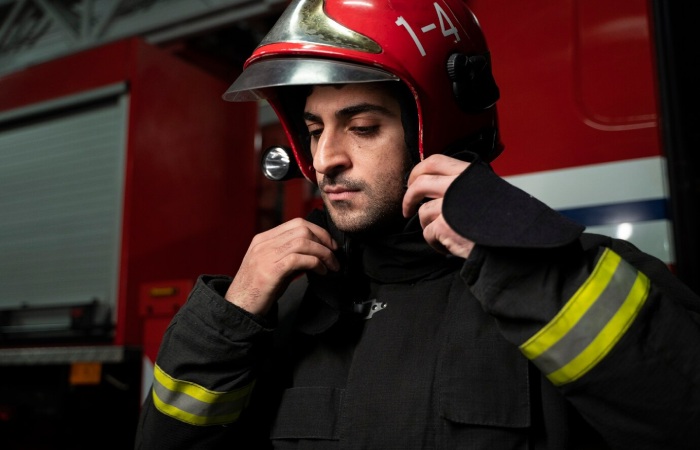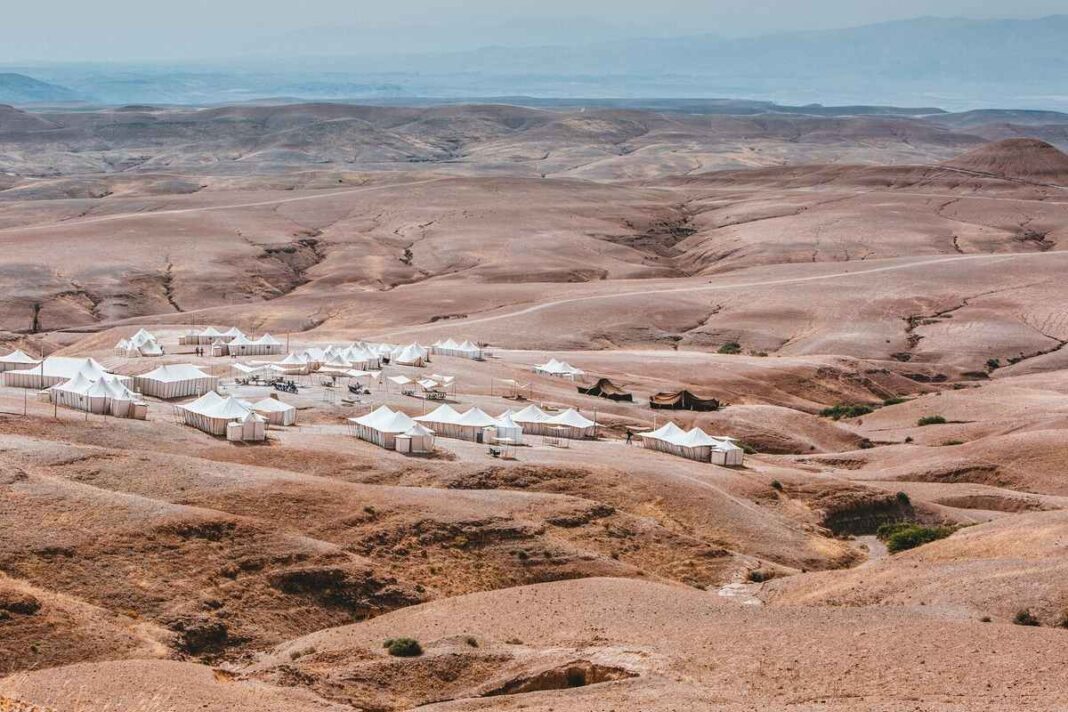In the vast, unforgiving deserts of the UAE and Middle East, temperatures regularly soar to 50°C, and water is scarcer than a rainy day. Traditional firefighting methods simply don’t cut it here. When fire itself adapts to these extreme conditions, you know you’re dealing with something extraordinary.
This harsh climate doesn’t just test human limits – it exposes the environmental price tag of older firefighting solutions. PFAS-based foams once seemed like miracle workers. Now? They’re known troublemakers, leaving behind ‘forever chemicals’ that threaten both environmental and human health.
Across the region, tailored and sustainable safety solutions are transforming industrial practices. We’re seeing a fundamental shift in safety protocols, from fluorine-free firefighting technologies to joint sustainability projects. The Desert Tourism Market reflects this change, with growth projections reaching USD 25 billion by 2033. As more visitors brave the UAE’s dunes for activities like dune bashing and camel trekking, the need for specialised safety innovations grows even stronger.
In facing these stark realities, it becomes clear that conventional methods aren’t enough – a challenge that modern industrial practices must now confront.
The Desert’s Harsh Reality
The desert creates unique safety challenges that conventional wisdom can’t solve. When temperatures soar daily, industrial firefighting methods that work perfectly in London or New York simply fail in Middle Eastern conditions.
Heat devastates firefighting effectiveness in multiple ways. Water evaporates rapidly from foams, forcing teams to use more product with fewer resources. In a region where water scarcity is already critical, every drop must work harder.
It’s a fundamental problem. Global safety protocols developed for temperate climates don’t account for these extreme conditions. This disconnect drives the urgent need for solutions specifically engineered for the desert’s unforgiving environment.
Legacy of PFAS-Based Foams
PFAS-based foams like AFFF gained popularity across desert industries because they work – plain and simple. Their rapid fire suppression capabilities and resistance to re-ignition made them the go-to choice for high-risk sectors from aviation to oil and gas.
But there’s always a catch. These effective foams come with environmental baggage – ‘forever chemicals’ that stick around long after the fire’s been extinguished. The environmental cost has become increasingly apparent, with cleanup expenses mounting into billions and health concerns multiplying. As regulatory pressure builds, the writing on the wall for PFAS-based foams is clear, even if it’s written in invisible ink.
The growing recognition of PFAS risks has forced a reckoning with legacy practices. What once seemed like perfectly acceptable solutions no longer meet the region’s evolving standards, driving the search for alternatives that perform without the persistent environmental impact.

Embracing Innovation
A breakthrough in safety technology is emerging with fluorine-free fire fighting foam. Convincing seasoned firefighters to switch from tried-and-tested methods to something new is a bit like asking someone to trade in their comfortable old shoes for new ones – right before a marathon.
Frontline Innovations’ development of FireBull shows how this challenge can be overcome. As a fluorine-free fire fighting foam, FireBull addresses both immediate performance needs and future environmental demands. Its rapid suppression capabilities and excellent burnback resistance prove that modern solutions can deliver effectiveness without ecological compromise. FireBull has earned Emirates Safety Laboratory Certificate #001 and Underwriters Laboratories certification, ensuring its compliance with stringent safety standards.
This technological evolution, as shown by this innovative foam, provides solutions specifically engineered for desert conditions. While change never comes easy in safety-critical industries, the transition to sustainable alternatives is gaining momentum as environmental regulations tighten globally.
Certification and Real-World Validation
Rigorous certification processes do the heavy lifting in proving that modern solutions can outperform traditional methods when the heat is on – literally. These processes involve exhaustive testing regimes that leave no stone unturned in verifying performance under extreme conditions.
FireBull has withstood extensive real-world testing, demonstrating its effectiveness in desert applications where water conservation and performance reliability are non-negotiable. Certifications from respected authorities like the Emirates Safety Laboratory and Underwriters Laboratories provide independent verification of its capabilities.
These thorough validation procedures create the solid foundation that safety professionals need to make confident decisions. In an industry where failure isn’t an option, empirical evidence through certification and field testing ultimately determines which innovations earn their place in the desert’s demanding environment.
Collaborative Safety and Sustainability
Comprehensive safety reforms go beyond developing new technologies. They require industry-wide sustainability initiatives. Coordinating these collaborative efforts isn’t easy. It’s like trying to get performers who’ve never met to dance together – challenging at first, but worth it when everyone finds their rhythm.
The Gulf Petrochemicals and Chemicals Association (GPCA) shows how industry collaboration drives sustainable practices. Their Memorandum of Understanding with the Alliance to End Plastic Waste reflects their commitment to environmental stewardship. In this partnership, initiatives focus on developing scalable projects to enhance recycling and reduce plastic leakage into the environment. By combining GPCA’s regional knowledge with the Alliance’s global expertise, this collaboration aims to strengthen recycling initiatives and improve sustainable waste management practices. Such partnerships show what collective action can achieve when tackling complex environmental challenges.
These collaborative industry efforts, as summarised by GPCA’s work with global partners, complement technological innovation. Together, they create comprehensive safety solutions that address both immediate concerns and long-term environmental impacts.
Learning from the Field
Insights from high-risk energy projects reveal evolving safety protocols that tackle the unique challenges desert environments present. These updated approaches reflect a broader trend toward proactive risk management rather than reactive responses.
Petrofac’s safety measures during energy infrastructure commissioning in the UAE highlight this evolution. Their approach includes comprehensive reviews, regular drills, and digital tools for logging safety observations. These practices show how companies are adapting their protocols to the specific demands of desert operations – where the margin for error shrinks along with the water supply.
These evolving safety protocols in high-risk sectors strengthen the case for region-specific strategies. Cookie-cutter approaches simply don’t cut it when dealing with the extreme conditions that characterise the Middle Eastern industrial landscape.
The Road Ahead
Looking at the broader implications of region-adapted safety protocols reveals potential new benchmarks for international standards. These innovations might influence global practices by showing how safety and sustainability can work together effectively.
Challenges remain, of course. Transitioning from legacy systems requires overcoming technical hurdles and achieving regulatory alignment. It’s not simple. Implementation obstacles include compatibility issues with existing infrastructure and the need for stakeholder buy-in. Addressing these challenges requires cooperation between industry leaders and regulatory bodies to smooth transitions and align regulations with emerging technologies.
The combination of technological innovation, rigorous validation, and industry collaboration is transforming safety practices in desert environments. This integrated approach solves regional challenges while creating pathways toward globally relevant practices that could benefit industries worldwide.
Igniting a New Era in Desert Safety
From the scorching conditions of the desert to the rise of tailor-made safety solutions, this journey confirms our central point: innovation isn’t just helpful in addressing region-specific challenges – it’s essential.
Just as we noted at the start, even fire must learn new tricks in the desert’s demanding environment. The irony doesn’t escape us: innovative fire safety now illuminates pathways to sustainability rather than posing environmental threats. When the tools that fight fire become friends of the environment, we’ve truly come full circle.
These developments will likely shape future global safety standards. After all, technologies that can withstand the desert’s ultimate stress test have proven their mettle in ways that matter everywhere. The desert, as it turns out, isn’t just demanding innovation – it’s helping perfect it.


